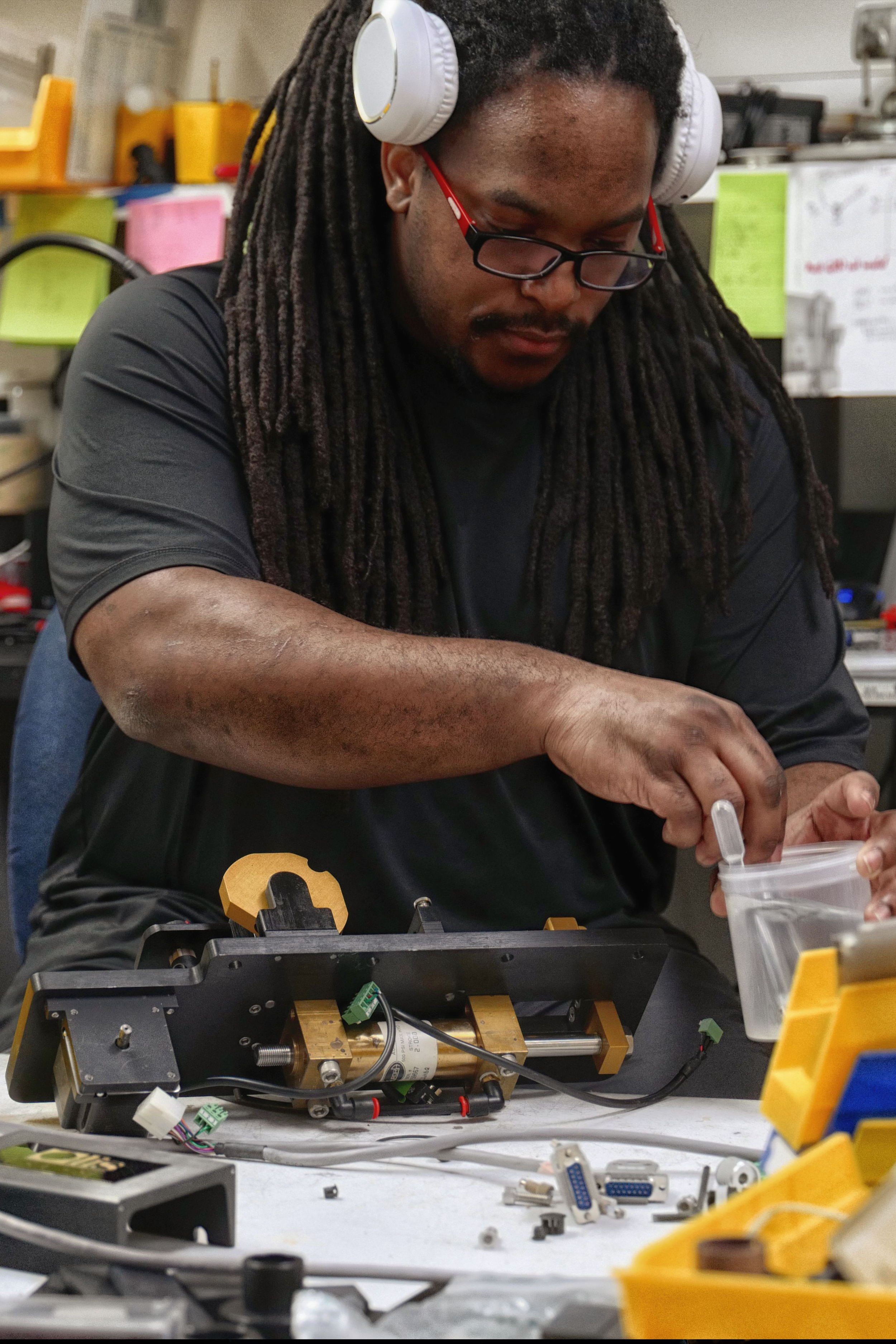Some Known Factual Statements About Circular Dichroism
Some Known Factual Statements About Circular Dichroism
Blog Article
Getting My Circularly Polarized Luminescence To Work
Table of ContentsUv/vis for DummiesAbout Circular DichroismSome Known Details About Uv/vis Uv/vis Can Be Fun For AnyoneThe Basic Principles Of Circular Dichroism

Spectrophotometry is most frequently applied to ultraviolet, noticeable, and infrared radiation, modern spectrophotometers can question large swaths of the electro-magnetic spectrum, consisting of x-ray, ultraviolet, noticeable, infrared, and/or microwave wavelengths. Spectrophotometry is a tool that depends upon the quantitative analysis of molecules depending on how much light is taken in by colored compounds.
Facts About Uv/vis/nir Revealed
A spectrophotometer is frequently utilized for the measurement of transmittance or reflectance of solutions, transparent or opaque solids, such as polished glass, or gases. Although numerous biochemicals are colored, as in, they absorb visible light and therefore can be measured by colorimetric procedures, even colorless biochemicals can typically be transformed to colored compounds ideal for chromogenic color-forming reactions to yield substances ideal for colorimetric analysis.: 65 However, they can likewise be developed to measure the diffusivity on any of the listed light varieties that usually cover around 2002500 nm utilizing different controls and calibrations.
An example of an experiment in which spectrophotometry is utilized is the decision of the stability constant of a service. A specific chemical reaction within a service may happen in a forward and reverse direction, where reactants form products and products break down into reactants. Eventually, this chemical response will reach a point of balance called a stability point.
Circularly Polarized Luminescence Can Be Fun For Everyone
The quantity of light that travels through the solution is a sign of the concentration of specific chemicals that do not enable light to go through. The absorption of light is due to the interaction of light with the electronic and vibrational modes of particles. Each kind of molecule has a private set of energy levels associated with the makeup of its chemical bonds and nuclei and thus will take in light of particular wavelengths, or energies, resulting in distinct spectral homes.
Making use of spectrophotometers covers various clinical fields, such as physics, products science, chemistry, biochemistry. circular dichroism, chemical engineering, and molecular biology. They are commonly used in many industries consisting of semiconductors, laser and optical manufacturing, printing web and forensic evaluation, along with in labs for the study of chemical compounds. Spectrophotometry is typically used in measurements of enzyme activities, determinations of protein concentrations, decisions of enzymatic kinetic constants, and measurements of ligand binding reactions.: 65 Ultimately, a spectrophotometer has the ability to figure out, depending on the control or calibration, what compounds exist in a target and exactly how much through calculations of observed wavelengths.
Created by Arnold O. Beckman in 1940 [], the spectrophotometer was produced with the help of his associates at his business National Technical Laboratories founded in 1935 which would end up being Beckman Instrument Company and eventually Beckman Coulter. This would come as an option to the formerly produced spectrophotometers which were not able to soak up the ultraviolet properly.
The Ultimate Guide To Uv/vis
It would be found that this did not offer acceptable outcomes, for that reason in Design B, there was a shift from a glass to a quartz prism which permitted better absorbance outcomes - spectrophotometers (https://pastebin.com/u/olisclarity1). From there, Design C was born with an adjustment to the wavelength resolution which wound up having 3 units of it produced
It was produced from 1941 to 1976 where the rate for it in 1941 was US$723 (far-UV accessories were an option at extra cost). In the words of Nobel chemistry laureate Bruce Merrifield, it was "most likely the most crucial instrument ever established towards the development of bioscience." Once it ended up being terminated in 1976, Hewlett-Packard created the first commercially readily available diode-array spectrophotometer in 1979 referred to as the HP 8450A. It irradiates the sample with polychromatic light which the sample soaks up depending upon its homes. It is sent back by grating the photodiode array which spots the wavelength region of the spectrum. Because then, the development and application of spectrophotometry devices has actually increased tremendously and has become one of the most innovative instruments of our time.

How Circularly Polarized Luminescence can Save You Time, Stress, and Money.
The grating can either be movable or repaired.
In such systems, the grating is repaired and the strength of each wavelength of light is measured by a different detector in the variety. When making transmission measurements, the spectrophotometer quantitatively compares the portion of light that passes through a referral solution and a test solution, then electronically compares the strengths of the two signals and computes the portion of transmission of the sample compared to the referral standard.

Report this page